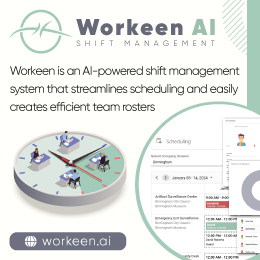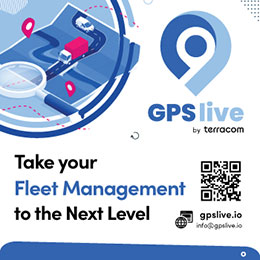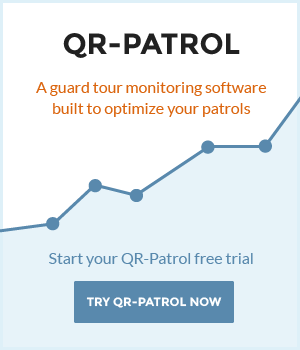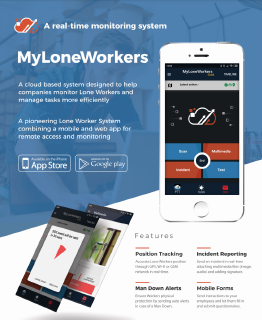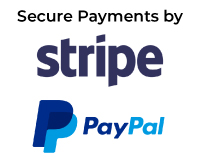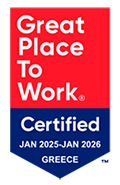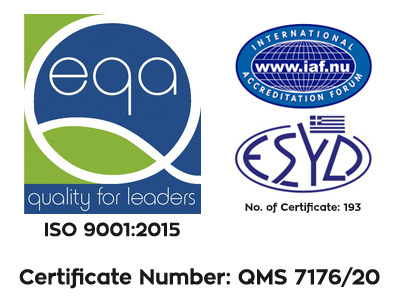
Why a Modern lone worker application Is Critical for High-Risk Field Operations in 2025
Table of Contents
- The New Realities of Field Work in 2025: Why Digital Safety Is No Longer Optional
- Why Human Monitoring Alone Is Not Enough Anymore
- Digital lone worker applications Outperform Traditional Methods
- Introducing MyLoneWorkers: The Modern Safety Backbone for High-Risk Field Operations
- Key Safety Features That Make MyLoneWorkers a Critical System in 2025
- Why Companies Can’t Afford to Avoid Digital Solutions in 2025
- Industries That Cannot Operate Safely Without a Modern lone worker application
- Why MyLoneWorkers Is the Best Solution for High-Risk Field Operations
- Conclusion: In 2025, Safety Requires Intelligence, Automation, and Real-Time Action
High-risk field operations are changing faster than ever. In 2025, companies with employees working alone, in remote areas, or in unpredictable environments are facing new safety pressures—and increasingly, the old ways of protecting staff simply aren’t enough. Manual check-ins, two-way radios, spreadsheets, and human monitoring have limits. Today’s risks demand something faster, smarter, and more reliable.
This is where a modern lone worker application becomes mission-critical. And not just any app, but a complete digital safety ecosystem that can monitor, support, and protect employees automatically, 24/7.
Companies across security, utilities, facility management, oil & gas, and maintenance are turning to MyLoneWorkers because it offers exactly that: a real-time, AI-powered, cloud-based safety platform built to meet the realities of 2025.
In this guide, we explore why digital transformation in field safety can no longer be postponed—why a modern alone application is now essential, and how MyLoneWorkers helps organizations stay compliant, proactive, and fully protected.
The New Realities of Field Work in 2025: Why Digital Safety Is No Longer Optional
Lone workers today operate in increasingly dangerous and uncontrolled environments. The rise in high-risk operations is driven by several factors:
1. More volatile worksites
Field employees now face:
 Escalating workplace violence
Escalating workplace violence Unpredictable interactions with the public
Unpredictable interactions with the public Hazardous or extreme environments
Hazardous or extreme environments Fatigue, remote travel, and night-shift risks
Fatigue, remote travel, and night-shift risks
These risks require rapid response and real-time monitoring—something paper forms and manual check-ins cannot provide.
2. Stricter regulations and liability pressures
Across the globe, governments are tightening lone-worker protection requirements. Companies must now demonstrate:
 Continuous monitoring
Continuous monitoring Documented safety protocols
Documented safety protocols Immediate emergency response capabilities
Immediate emergency response capabilities Proper audit trails
Proper audit trails
Failing to implement a modern lone worker application can increase liability, insurance costs, and exposure to fines.
3. A workforce that demands modern tools
Today’s employees expect:
 Reliable mobile technology
Reliable mobile technology Smart safety features
Smart safety features Intuitive apps
Intuitive apps Automated welfare checks
Automated welfare checks
A clunky check-in process or outdated device is no longer acceptable—and may even increase turnover in sectors struggling with labor shortages.
Why Human Monitoring Alone Is Not Enough Anymore
Human oversight, while valuable, comes with clear limitations:
 People get distracted
People get distracted Shifts change
Shifts change Information gets missed
Information gets missed Delays happen
Delays happen
A modern lone worker application solves these issues through automation. Alerts are delivered instantly, location data updates in real time, and incidents are logged without human error. By combining automation with human supervision, companies get the best of both worlds: consistent monitoring with smarter, faster response.
Digital lone worker applications Outperform Traditional Methods
Traditional methods (radio check-ins, phone calls, paper logs) create risk because:
 Workers may forget to check in
Workers may forget to check in Emergencies can escalate before anyone is aware
Emergencies can escalate before anyone is aware There is no automated escalation
There is no automated escalation Location information is incomplete or unreliable
Location information is incomplete or unreliable
A modern alone application like MyLoneWorkers fixes these gaps by providing:
 Automated check-ins and alerts
Automated check-ins and alerts Real-time GPS, Wi-Fi, and GSM location tracking
Real-time GPS, Wi-Fi, and GSM location tracking Instant SOS and Man Down detection
Instant SOS and Man Down detection Continuous activity logging
Continuous activity logging Cloud-based data storage for auditing and compliance
Cloud-based data storage for auditing and compliance
In high-risk operations, minutes matter—and digital technology gives companies an immediate advantage.
Introducing MyLoneWorkers: The Modern Safety Backbone for High-Risk Field Operations
MyLoneWorkers is a complete cloud-based workforce management and safety system designed specifically for remote and blue-collar workers. It combines a mobile app, a powerful web platform, and advanced automation tools to ensure every employee is supported and protected, no matter where they are.
How MyLoneWorkers Works
Workers scan NFC, QR, Beacon, or Virtual checkpoints placed across sites. Each scan sends verified location data—GPS, Wi-Fi, GSM—directly to the cloud, where managers can:
 Track activity in real time
Track activity in real time Review incidents or assigned work
Review incidents or assigned work Communicate instantly
Communicate instantly Respond to emergencies faster
Respond to emergencies faster
Workers can also attach photos, notes, audio, or signatures to tasks, improving documentation and operational clarity.
And in an emergency, one press of the SOS button sends a precise location alert to the monitoring center, enabling immediate action.
Key Safety Features That Make MyLoneWorkers a Critical System in 2025
MyLoneWorkers stands out because it integrates multiple advanced safety tools into one unified lone worker application.
1. Man Down Alerts
If a worker collapses, slips, or loses consciousness, the Man Down sensor clip automatically triggers an alert—no phone input needed.
This ensures:
 Zero-delay detection
Zero-delay detection Fast response
Fast response Increased survival rates
Increased survival rates
In 2025, this is considered essential for hazardous sites.
2. BLE Panic Button
Workers can carry a physical panic button to trigger SOS alerts instantly—even if they can’t reach their phone.
3. SOS & Test Alerts
Lone workers can perform Test alerts to verify system functionality, and use SOS alerts for immediate emergencies. Notifications can also be sent via SMS to up to three numbers—ensuring managers never miss a critical event.
4. Welfare Check Automation
If a worker misses a scheduled check-in, supervisors are notified automatically. No guesswork, no delays.
5. Geofence Alerts
If a checkpoint is scanned outside of its predefined area—or not scanned at all—the system notifies the monitoring center. This is invaluable for:
 Route deviations
Route deviations Restricted zones
Restricted zones Safety compliance
Safety compliance
6. SafePass for VIP and Client Protection
Clients or VIPs can use SafePass, a dedicated mobile app that connects directly to your monitoring center—a valuable add-on for security and private protection companies.
7. Trail Workers Route Tracking
Managers can see the exact path a worker took—either in static form or as an animation—ensuring transparency and accurate reporting.
8. Issue Management & Work Orders
Incidents, SOS alerts, and pending actions are managed centrally through the Issue Management system. Work Orders can be assigned, scheduled, and linked to specific locations or tasks.
9. AI Assistant for Instant Reports
The AI Assistant allows managers to ask questions like:
 “Show all incidents in the last 7 days.”
“Show all incidents in the last 7 days.” “Which guard triggered an SOS today?”
“Which guard triggered an SOS today?”
In seconds, they receive instant reports—no manual filtering required.
10. Custom Fields for Flexible Data Capture
Organizations can add their own fields to match their operational requirements—ensuring the platform adapts to them, not the other way around.
Why Companies Can’t Afford to Avoid Digital Solutions in 2025
 Faster incident response saves lives: With automated alerts, location tracking, and immediate SOS notifications, response times drop dramatically.
Faster incident response saves lives: With automated alerts, location tracking, and immediate SOS notifications, response times drop dramatically. Better compliance and audit readiness: Digital logs, timestamps, geolocation data, and automated documentation make regulatory compliance easier—and reduce legal risk.
Better compliance and audit readiness: Digital logs, timestamps, geolocation data, and automated documentation make regulatory compliance easier—and reduce legal risk. Reduced insurance costs: Insurance providers increasingly reward companies that implement advanced lone worker protection tools.
Reduced insurance costs: Insurance providers increasingly reward companies that implement advanced lone worker protection tools. Improved operational efficiency: Work orders, digital reporting, and automated monitoring create smoother workflows and less administrative overhead.
Improved operational efficiency: Work orders, digital reporting, and automated monitoring create smoother workflows and less administrative overhead. Stronger employee morale and retention: Workers feel safer—and safety is now one of the top criteria employees consider when choosing a company.
Stronger employee morale and retention: Workers feel safer—and safety is now one of the top criteria employees consider when choosing a company.
Industries That Cannot Operate Safely Without a Modern lone worker application
In 2025, certain sectors are at the forefront of risk. For them, a robust alone application is not optional:
 Security and Guarding Services
Security and Guarding Services Energy, Oil & Gas, and Utilities
Energy, Oil & Gas, and Utilities Maintenance and Facility Management
Maintenance and Facility Management Transportation and Logistics
Transportation and Logistics Telecommunications and Infrastructure
Telecommunications and Infrastructure Field Service Technicians
Field Service Technicians Environmental and Emergency Response Teams
Environmental and Emergency Response Teams
In these sectors, safety incidents can escalate within seconds—making automation essential.
Why MyLoneWorkers Is the Best Solution for High-Risk Field Operations
MyLoneWorkers has become a leader in lone worker safety because it provides:
 Instant SOS and Man Down alerts
Instant SOS and Man Down alerts Reliable cloud-based infrastructure
Reliable cloud-based infrastructure Real-time monitoring from anywhere
Real-time monitoring from anywhere Quick setup with no hardware installation costs
Quick setup with no hardware installation costs Seamless integration of AI, automation, geofencing, BLE panic buttons, welfare checks, SafePass, and route tracking
Seamless integration of AI, automation, geofencing, BLE panic buttons, welfare checks, SafePass, and route tracking
In other words, MyLoneWorkers is not just an app—it’s a full safety ecosystem built for the modern world.
Conclusion: In 2025, Safety Requires Intelligence, Automation, and Real-Time Action
High-risk field operations are only getting more complex. Manual systems are too slow, too unreliable, and too vulnerable to human error. A modern lone worker application—or a comprehensive alone application like MyLoneWorkers—is now the standard for companies that want to protect employees, reduce liability, and maintain operational excellence.
MyLoneWorkers doesn’t simply report emergencies—it prevents them, detects them automatically, and enables a rapid response that saves lives.
For companies ready to modernize, improve compliance, and protect their workforce, the time to upgrade is now.
Start protecting your lone workers today. Book a demo with us today or contact our team to learn how a modern lone worker application can strengthen safety across your organisation.

